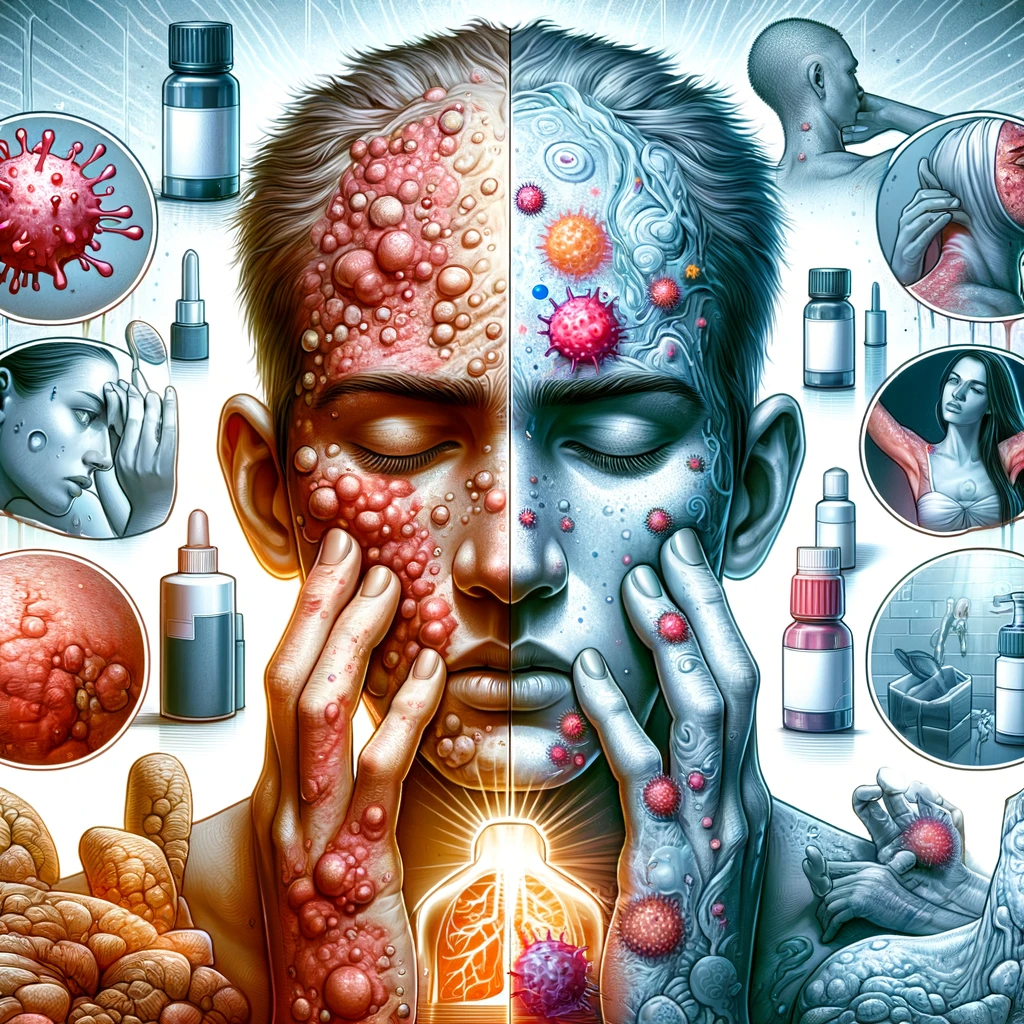Experience the agonizing battle against cystic acne and discover effective strategies for achieving clear, healthy skin. Cystic Acne: The Painful Battle for Clear Skin delves into the depths of this severe skin condition, exploring its distinguishing characteristics and potential complications. With evidence-based information and practical tips, this article equips readers with the knowledge and tools necessary to navigate the challenges of cystic acne. From medical interventions to skincare and stress management, uncover the secrets to conquer this painful battle and unveil a brighter complexion.
Understanding Cystic Acne
Cystic acne is characterized by deep, painful lesions that do not come to a head like other forms of acne. These acne cysts have a smooth surface, often appearing shiny due to stretched skin. The physical pain caused by cystic acne is a dull, day-long throb, and the affected area becomes sensitive to touch. It is important to note that cystic acne differs from large papules or nodules, which may resemble cysts but lack pus. As the most severe subtype of acne, cystic acne can cause scarring and hyperpigmentation. To ensure safety, individuals experiencing cystic acne should consult a GP for proper diagnosis and treatment options, such as oral/topical antibiotics or hormonal therapy. Additionally, cosmetic skincare can be used alongside medical treatments to minimize the appearance of cystic acne.
Dealing With Cystic Acne
When faced with the challenges of cystic acne, individuals must navigate various options for managing and treating this severe subtype of acne. It is crucial to consult with a GP for proper diagnosis and treatment options, which may include oral/topical antibiotics or hormonal therapy. Medical treatments can be complemented by cosmetic skincare to minimize the appearance of cystic acne. While cortisone injections are popular for quick relief in the US, they may not be feasible for everyone. Applying ice to an acne cyst can help reduce pain and inflammation. It is also important to use skincare products with small molecules that can penetrate deep into the skin and soothe inflammation. By following these guidelines, individuals can take proactive steps towards managing cystic acne safely and effectively.
Skincare for Cystic Acne
To effectively manage cystic acne, individuals can implement a personalized skincare routine that targets inflammation and promotes healing. Traditional spot treatments are ineffective for cystic acne as they cannot reach deep into the skin. Instead, skincare products with small molecules that can penetrate deep into the skin and soothe inflammation should be used. Cortisone injections are often used due to their ability to penetrate and reduce inflammation. However, it is important to avoid picking or popping cystic acne, as it can worsen the infection and lead to scarring. Hydrating the skin instead of drying it out is crucial, as hydrated skin promotes healing. Therefore, using serums with ingredients that soothe inflammation and provide hydration is recommended. By following a skincare routine tailored for cystic acne, individuals can mitigate inflammation, promote healing, and improve the overall health of their skin.
Preventing Scarring From Cystic Acne
In order to prevent scarring from cystic acne, it is crucial to incorporate effective skincare practices. Here are three important steps to follow:
-
Gentle Cleansing: Use a mild, non-comedogenic cleanser to gently cleanse the skin twice a day. Avoid harsh scrubbing or using abrasive products that can irritate the skin and lead to scarring.
-
Moisturize and Hydrate: Keeping the skin well-hydrated can promote healing and prevent scarring. Choose a moisturizer that is suitable for acne-prone skin and contains ingredients like hyaluronic acid or ceramides to help maintain the skin’s moisture barrier.
-
Sun Protection: Protecting your skin from the sun is crucial in preventing post-inflammatory hyperpigmentation, which can worsen the appearance of acne scars. Apply a broad-spectrum sunscreen with at least SPF 30 every day, even on cloudy days.
Managing Stress to Reduce Cystic Acne
Continuing the exploration of effective strategies for preventing scarring from cystic acne, the focus now shifts to the crucial role of managing stress in reducing the occurrence of these painful breakouts. Stress has been linked to various skin concerns, including cystic acne. By engaging in stress-reducing activities such as yoga, meditation, mindfulness, and radical acceptance, individuals can help reduce the occurrence of cystic acne breakouts. Neglecting stress management can lead to worsening of cystic acne and long-term damage. Being conscious of stress and its impact on the skin is essential for managing cystic acne effectively.
| Stress-Reducing Activities | Benefits |
|---|---|
| Yoga | Helps relax the mind and body, reducing stress levels |
| Meditation | Promotes mental clarity and reduces anxiety |
| Mindfulness | Increases self-awareness and helps manage stress triggers |
| Radical Acceptance | Encourages acceptance of difficult emotions, reducing stress levels |
Seeking Medical Treatment for Cystic Acne
Medical treatment is essential for effectively managing and treating cystic acne. Seeking professional help is crucial to ensure proper diagnosis and appropriate treatment options. Here are three reasons why seeking medical treatment for cystic acne is important:
-
Accurate diagnosis: A healthcare provider can accurately diagnose cystic acne and differentiate it from other types of acne or skin conditions. This is essential to develop an effective treatment plan tailored to the individual’s specific needs.
-
Prescription medications: Medical professionals can prescribe oral or topical antibiotics, hormonal therapy, or other medications to target the underlying causes of cystic acne. These treatments can help reduce inflammation, control bacterial growth, and prevent future breakouts.
-
Preventing complications: Cystic acne can lead to scarring and hyperpigmentation if left untreated. Medical treatment can help minimize the risk of long-term skin damage and improve overall skin health.
Lifestyle Changes for Clear Skin
To achieve clear skin, individuals with cystic acne can make lifestyle changes that promote skin health and minimize breakouts. Making these changes can help reduce inflammation, prevent clogged pores, and improve overall skin condition. First, it is important to maintain a regular skincare routine that includes gentle cleansing, exfoliating, and moisturizing. Avoid harsh products that can irritate the skin and worsen acne. Additionally, adopting a healthy diet rich in fruits, vegetables, and whole grains can provide essential nutrients and antioxidants that support skin health. Drinking plenty of water and avoiding sugary and greasy foods can also help maintain clear skin. Getting enough sleep, managing stress levels, and exercising regularly can further contribute to overall skin wellness. Lastly, avoiding touching or picking at the acne can prevent further inflammation and scarring. By implementing these lifestyle changes, individuals can promote clear skin and minimize the impact of cystic acne.

